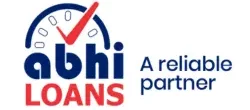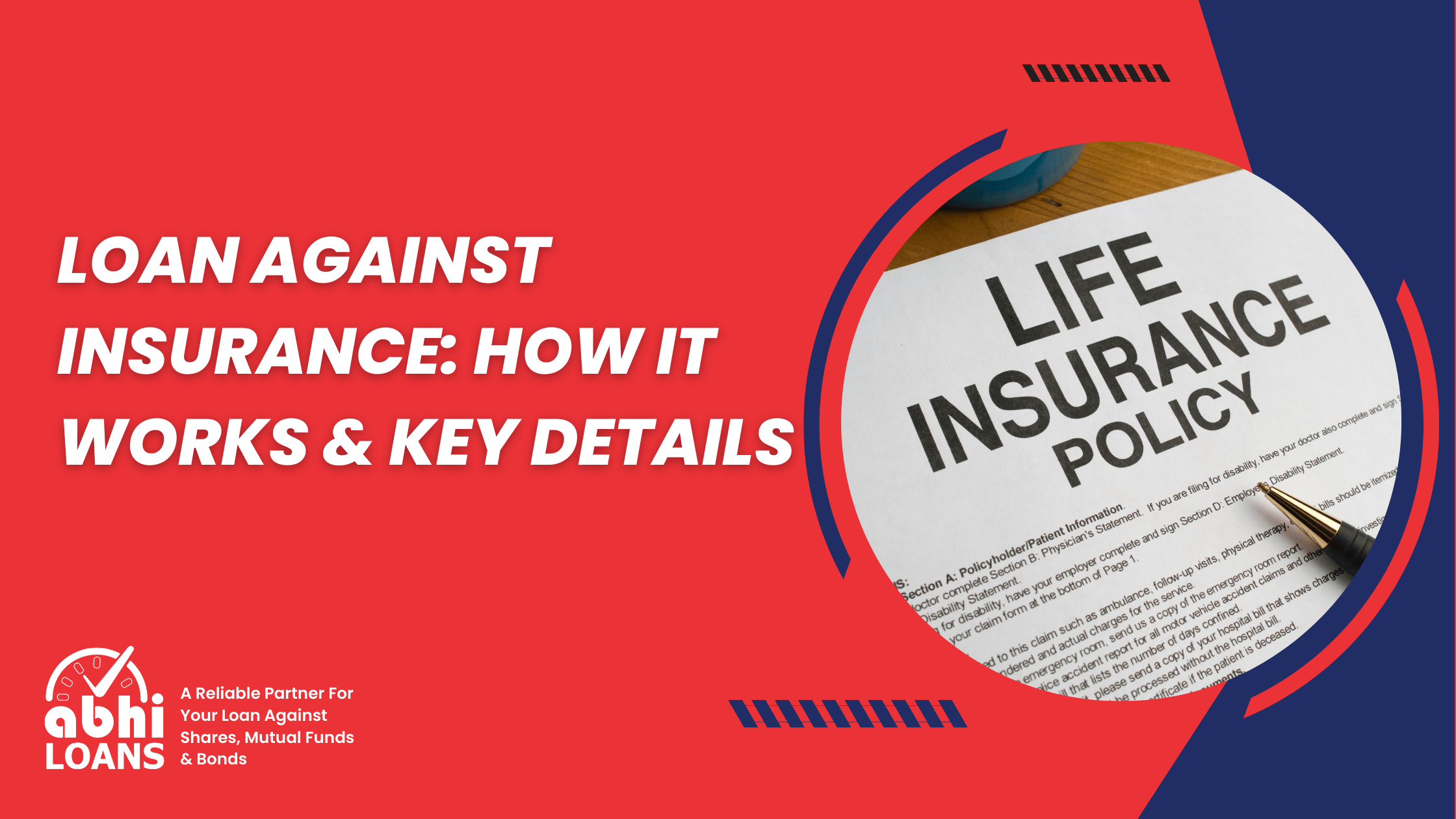Loan Against Insurance policy: How It Works & Key Details
Life is full of surprises. Sometimes they’re pleasant, but other times, they come with a financial cost—like medical emergencies, sudden travel plans, or funding your child’s education. In such situations, most people turn to personal loans or even consider breaking their long-term savings. But what if we told you there’s a smarter, faster, and more cost-effective way to raise funds?
Yes, you read that right.
You can raise money by using your life insurance policy as collateral. It’s called a Loan Against Insurance Policy, one of the most underutilized financial solutions out there. This guide will explain everything you need to know—from what it is and how it works to why it might be the perfect option for your short-term financial needs.
What is a Loan Against Insurance Policy?
A Loan Against Insurance Policy is a secured loan that allows you to borrow money against the surrender value of your life insurance plan. The insurance policy acts as collateral for the loan. This means you don’t have to worry about high interest rates, strict eligibility conditions, or lengthy processing times.
Unlike a personal loan, which is unsecured and based on your credit score, this option leverages the value already built up in your insurance policy. And the best part? Your policy continues to offer life coverage even while it’s being used as loan collateral.
This facility is typically available only on traditional life insurance plans like endowment policies, whole life plans, and money-back policies—not on term insurance, as they have no surrender value. While insurers do not offer loans against ULIPs, if the policy is assignable, banks or NBFCs can provide loans even against ULIP policies.
However, do note that this facility is typically available only on traditional life insurance plans like:
- Endowment Policies
- Whole Life Plans
- Money-Back Policies
It is not available on term insurance plans because they do not carry any surrender value.
Essential Features of a Loan Against Insurance Policy
Before diving into the benefits, let’s look at some of the key features that make this type of loan unique:
- Loan Amount: You can borrow up to 80%–90% of your policy’s surrender value.
- Collateral: The life insurance policy itself serves as security.
- Loan Tenure: Depends on the remaining term of the policy or as agreed by the lender.
- Repayment: You can repay through EMIs or a lump sum, with flexible interest payment options.
- Processing Time: Loans are usually processed quickly due to the low-risk nature of the collateral.
- Interest Rate: Typically lower than unsecured loans—ranging from 8% to 12%.
Why Choose a Loan Against Insurance Policy?
Let’s face it—taking a personal loan can be stressful, especially when you have to prove your creditworthiness or wait days for approval. On the other hand, taking a loan against your life insurance policy comes with a host of advantages.
1. Low Interest Rates
Interest rates on these loans are significantly lower compared to unsecured loans. That’s because the insurer already holds your policy as collateral, making it a low-risk lending option. Lower risk equals lower cost.
2. Quick and Hassle-Free Disbursal
Since the policy is already in place and owned by you, the verification process is minimal. Loans can often be disbursed within 24 to 48 hours of approval, which is great for emergencies.
3. Policy Benefits Remain Intact
One of the biggest advantages is that your policy continues to provide life coverage. As long as you keep paying the premiums and repaying the loan as scheduled, your nominee will still receive the death benefit in the event of an unfortunate incident.
4. No Need to Liquidate Investments
Selling your fixed deposits or mutual funds during a downturn can lead to losses. By using your life insurance policy instead, you can access funds while letting your investments continue to grow.
5. Flexible Repayment Options
You can choose to pay only the interest during the loan tenure and repay the principal later. Or you can pay regular EMIs. Many insurers also allow bullet payments at the end of the loan term.
Who is Eligible?
Not all life insurance policies qualify—here’s what you should know before applying:
- You must be the policyholder and legally own the policy.
- The policy should be a traditional savings plan with a built-up surrender value.
- ULIPs have a lock-in period of 5 years, which means you cannot withdraw money or take a loan during this time.
Note – However, once only 1–2 years are left in the lock-in period, some insurers may allow loans—but for a lower amount compared to the policy value (this is called a lower LTV or Loan-to-Value ratio). - The insurance policy must have up-to-date premium payments with no history of lapses.
- To avail a loan against an insurance policy, the policyholder must assign the policy to the lender.
How Much Can You Borrow?
The loan amount is determined by the policy’s surrender value—the amount you would receive if the policy were terminated before maturity. Typically, you can borrow:
- Up to 80% of the surrender value in case of regular plans
- Up to 90% in case of paid-up or fully paid policies
For example, if your policy has a surrender value of ₹5,00,000, you may be eligible to borrow between ₹4,00,000 and ₹4,50,000.
Documents Required
Here’s the good news—you won’t need a long list of documents. Generally, you’ll need:
- Policy document (original copy)
- Identity proof (Aadhaar/PAN)
- Address proof
- Passport-sized photographs
- cancelled cheque or bank passbook
- Loan application form
At Abhiloans, Loans against Life Insurance Policies are offered in partnership with our Loan service provider, Mera Kal. With minimal documentation and fast processing, you can access funds when you need them most—whether it’s for an emergency, personal needs, or planned expenses.
How the Repayment Works
Lenders offer flexible repayment options based on your financial situation. Here are the common repayment methods:
1. Interest-Only EMIs: Pay just the interest during the tenure of the loan. The principal is repaid at policy maturity or surrender.
2. Regular EMIs: Pay both interest and principal monthly over a fixed term, similar to a personal loan.
3. Bullet Repayment: During the loan period, the borrower typically pays only the interest monthly, and the full principal is repaid in a single lumpsum at maturity—hence the term ‘bullet repayment.
What Happens If You Don’t Repay?
If you fail to repay the loan:
- The lender will recover the outstanding loan amount by surrendering your policy.
- If the outstanding loan and interest exceed the surrender value of your insurance policy, the insurer may terminate or lapse the policy.
- In case of death before repayment, the nominee will receive the death benefit minus the outstanding loan.
So, while this is a great option, responsible repayment is essential to avoid affecting your policy’s primary purpose—financial protection.
Loan Against Insurance Policy vs. Personal Loan
| Feature | Loan Against Insurance | Personal Loan |
| Collateral Required | Yes (insurance policy) | No |
| Interest Rate | 8%–12% | 12%–24% |
| Processing Time | Fast (24–48 hours) | Moderate |
| Maximum Loan Amount | Based on surrender value | Based on credit score |
| Credit Score Impact | Minimal | High |
| Repayment Options | Flexible | Fixed EMIs |
| Documentation | Minimal | Moderate to High |
Note: The insurance policy will be reassigned to the borrower after the loan is closed.
Where Can You Apply?
You can apply through:
Several financial institutions offer this facility against policies from major insurers. You can also apply for a loan against your insurance policy through Mera Kal, with AbhiLoans as the lending partner. Before choosing a lender, make sure to compare interest rates, processing fees, and repayment flexibility to find the best fit for your needs.
Points to Keep in Mind
Before you go ahead and apply, here are a few things to remember:
- Not all policies qualify—term insurance is excluded.
- Make sure your policy is active and premiums are up to date.
- Avoid defaulting to preserve your life coverage.
- Use this loan for short- to medium-term needs, not long-term financing.
- Continue paying the premiums regularly to enjoy policy benefits and avoid policy lapse.
Conclusion
A loan against an insurance policy is one of the most efficient ways to handle short-term cash flow issues without touching your savings or taking a high-interest personal loan. With lower interest rates, faster processing, and minimal documentation, it’s a win-win—especially during emergencies.
Whether you’re dealing with medical bills, wedding expenses, or a sudden opportunity to invest, your life insurance policy could be your hidden financial safety net. So, if you have an eligible policy sitting idle, now might be the right time to put it to work.

